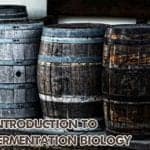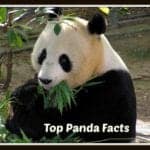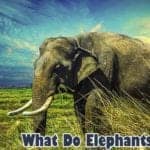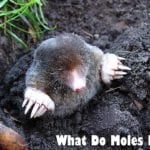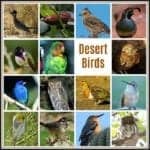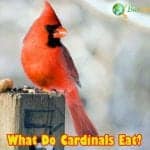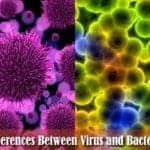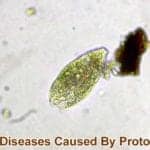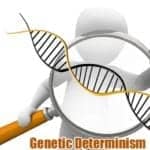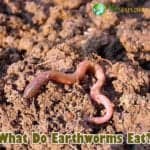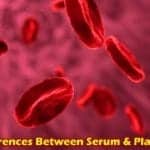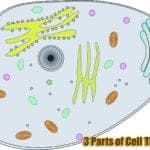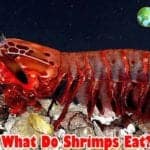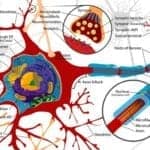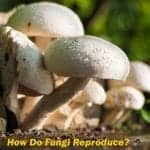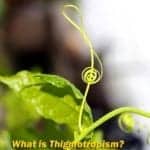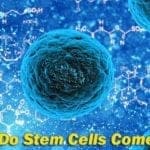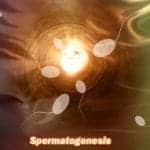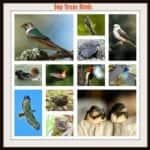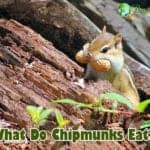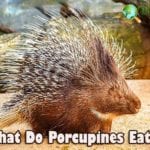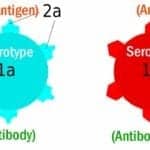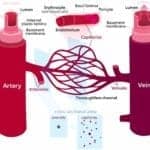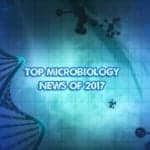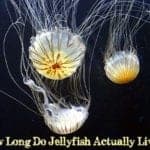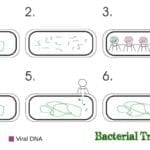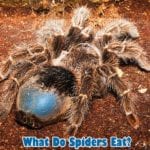types - search results
If you're not happy with the results, please do another search
How To Become An Allergist?
An allergist is a healthcare professional who is specializing in the treatment of allergies. Explore how to become allergist, expected salary & other info.
Introduction To Fermentation Biology
Fermentation biology is an energy releasing process that brings about chemical changes in raw food. There are 2 types of fermentation namely Lactic Acid Fermentation & Alcoholic Fermentation. Explore the real-life applications of fermentation in domestic, industrial and medical fields.
Top 20 Cord Blood Banking Pros and Cons
The blood of the cord is another highly populated source of stem cells. Medical scientists and doctors bank the richly nourished blood of the cord. Let’s analyze the cord blood banking pros and cons in detail.
Top 25 Fun Facts About The Muscular System
The muscular system works alongside the skeletal system to keep the body aligned and completely functional. Here are the top 25 fun muscular system facts.
Top 15 Current Environmental Issues in the US
Being the third largest country in the world, the United States of America has emerged as one of the significantly affected regions from the top 15 environmental issues.
Top 20 Organ Donation Pros and Cons
The process of organ donation is viewed as lifesaver while others consider it a useless process. Explore the top 20 pros and cons of organ donation.
Explore The Cells of The Epidermis
The skin is one of the most important organs in the human body. Explore the 4 cells of the epidermis (types of skin cells), layers of skin, and their functions.
Top 25 Fun Facts About The Digestive System
The human digestive system is fascinating & extends over a long stretch in the human body. Explore the top 25 fun facts about the digestive system & functions.
Explore Panda
Learn about all aspects of the black and white giant panda, the red panda, the Qinling panda, the interesting facts about panda, their diet plan and much more.
Top 31 Fun Facts About Pandas
Pandas, also named big bear cat in Chinese, is one of the most amazing animals on the face of the earth. Here are the best 31 fun facts about pandas.
Top 8 Differences Between Centrosome and Centriole
Centrosome vs Centriole: The cell is the basic functional unit of life that comprises of complex structures. The structures that enable the formation of spindle fibers are known as centrioles, and the organelle that organizes their formation is called the centrosome. Explore the top 8 differences & similarities between them.
What Do Killer Whales Eat?
Killer Whales also referred to as orcas, are sea mammals. Explore what do killer whales eat, diet by their types, what eats killer whales & other questions.
What Is Facilitated Diffusion & Their Importance, Experiments, and Examples?
In living organisms, the diffusion of substances is mediated by the cell membrane. By definition, facilitated diffusion is a type of passive transport which utilizes 'agents' known as channel proteins and carrier proteins to speed up the transport process. Explore the importance, experiments & examples of it.
Designer Babies Pros and Cons
About four decades ago, the first ever test tube baby was created using the process of IVF. Like any scientific innovations, the technology of creating designer babies has a wide variety of promising advantages and at the same time possible disadvantages too. Explore the designer babies pros and cons here.
15 Best Zoos in the USA
Zoos serve as a home for numerous animals. It is no denial that the United States is a home to some of the world-class zoological parks in the world. To help you choose the perfect (and possibly the nearest) zoo to visit, here are the top 15 best zoos in the US with direct website references.
What Do Elephants Eat?
Elephants are the largest living mammals on land. On this page, explore what do elephants eat, diet by their types, how often, when & what eats elephants.
What Do Skunks Eat?
Skunks are small furry animals notable for their black and white-colored fur. These animals are omnivorous. Explore what do skunks eat & their diet by types.
What Do Moles Eat?
Moles are the small mammals who spend most of their time underground. Explore what do moles eat, types of moles, and what eats moles on this page.
What Do Alligators Eat?
Explore what do alligators eat and their diet types. Alligators are primarily carnivores feeding on prey like fish, mollusks, other reptiles, and birds.
What Do Armadillos Eat?
Armadillos are endemic to the Americas. Learn what do armadillos eat by their types. Armadillos are omnivores (a diet of both meat & plants materials).
What Do Hummingbirds Eat?
Explore what do hummingbirds eat here. Hummingbirds mainly eat nectar from flowers. They further supplement this diet by feeding on a wide array of insects.
What Do Wild Rabbits Eat?
Wild rabbits draw their genesis from Europe & Africa. Explore what do wild rabbits eat in the wild, types of wild rabbits & their diets, and predators here.
What Do Salamanders Eat?
Salamanders are classified as amphibians. Explore what do salamanders eat, types of salamanders and their diets. Salamanders are mostly carnivorous.
Explore Desert Birds & Their Adaptations
A desert is a barren landscape area with little to no water (no precipitation) found which makes the living condition extremely hostile for plants and animals. Explore 15 different types of desert birds and their adaptations on this page.
What Do Cardinals Eat?
Cardinals are also referred to as redbirds. These perching birds found in North and South America are omnivores. Explore what do cardinals eat and more.
What Do Manatees Eat?
Manatees are large mammals that are also referred to as sea cows. Explore what do manatees eat, their diet by types, what eats manatees and more here.
How Are Viruses Different From Bacteria?
While it is true that viruses and bacteria are often (and sometimes mistakenly) associated with diseases, many find them to be seemingly indistinguishable. Explore how are viruses different from bacteria at a microscopic level from 15 various aspects.
Top 11 Cell Biology Textbooks of All Times
Cell biology is often considered to be a challenging subject area, whether in academics or research. Here are the 11 of the best cell biology textbooks of all times, which will aid aspiring students and researchers in Cell Biology.
Top 12 Diseases Caused By Protozoa
Protozoans are multi-cellular organisms and have membrane-bound organelles that work independently from the whole cell. Most of the time, protozoans are microscopic. Due to their size, they are parasitic organisms for humans (ranges from benign or severe). Explore top 12 diseases caused by protozoa here.
What Do Gorillas Eat?
Gorillas are warm-blooded mammals occupy the forest floor layer of the tropical rainforests. What do gorillas eat? Are gorillas herbivores or omnivores? Explore the answers to all these questions & more.
What is Genetic Determinism?
An emerging idea in the field of genetics called Genetic Determinism (Biological Determinism) is a concept that entertains the belief that human behavior is governed and controlled by the action of genes, and bypasses the role the environment plays. Learn definition, history, types & concepts of Genetic Determinism.
What Do Earthworms Eat?
Earthworms are believed to be omnivorous, feeding on plants and animals. Explore what do earthworms eat, earthworms diet by types & what eats earthworms.
Top 14 Differences Between Serum and Plasma & Similarities
Blood contains two other parts – plasma and serum. It is quite common to come across these two terms frequently and be confused by the two. However, both are vital components of the blood. Explore top 14 key difference between serum and plasma and also similarities between them in this page.
Explore What Is Cell Theory & Parts of Cell Theory
All living organisms on the planet are made up of tiny individual units called cells. Without these units, living organisms cannot function the way they do now. In this article, we will explore the aspects and 3 parts of cell theory, its rivaled history, and many versions, as well as the exceptions to cell theory.
Top 17 Stem Cell Research Pros and Cons
The human body is made up of trillions of cells that are the foundation for different tissue and organ systems. Stem cell therapy involves isolating stem cells from their respective niche and using them to treat a disorder, area of injury or damaged tissue. Let's explore top 17 stem cell research pros and cons here.
Can Animals Have Down Syndrome?
Animals and humans can share a host of different diseases and illnesses. Although they may manifest and present differently in the two, animals, too, can acquire genetic disorders. Can animals have Down syndrome? Explore reports on animals having Down syndrome with good illustrations.
What Do Shrimp Eat?
Shrimps are crustaceans with long slender bodies. Their muscular abdomens come in handy during locomotion. Explore what do shrimps eat & what eats shrimps.
Top 38 Fun Facts About The Nervous System
The nervous system is a complicated web of nerve fibers and cells that run to & from the brain. Here are the top 38 fun facts about the nervous system.
How Do Fungi Reproduce?
Fungi are mostly multicellular, heterotrophic, complex organisms that belong to the eukaryotic kingdom. Being an eukaryote, how do fungi reproduce? Explore how eukaryotes reproduce in general and different types of fungi reproduction with good examples & more on this page.
Explore The World of Thigmotropism
Thigmotropism refers to the movement of a plant in response to the stimulus of touch or contact. It is also called Haptotropism. Explore the world of Thigmotropism in this page, why and how it occurs in plants, types of thigmotropism and good examples.
What Do Bearded Dragons Eat?
The bearded dragon gets its name from spiny scales. In general, bearded dragon is an omnivore. Explore what do bearded dragons eat by their types and more.
Where Do Stem Cells Come From?
Stem cells are a group of cells found at specialized sites in the body that have the potential to develop into different cell types but where do stem cells come from? Let's explore what is stem cells, types of stem cells, stem cell origin and their benefits/functions in detail.
Spermatogenesis: The Generation of Sperm Cells
In the animal kingdom, the union of the sperm and egg is the foundation of reproduction of the species. Spermatogenesis is the production of sperm from the primordial germ cells within the male reproductive organs. Learn the process of spermatogenesis & how simple germ cells develop into the male gamete, the sperm.
Explore Top 14 Texas Birds With Their Identifications
Because of its geographic location and extra diverse regions, Texas is blessed with rich bird wildlife. It is even considered as the most diverse bird state in the United States. Here is the list of some of the most famous Texas birds that are native to Texas.
What Do Koi Fish Eat?
Koi fish are described as the colored varieties of the fish referred to as the Amur Carp. Explore what do Koi fish eat, diet by types & what eats Koi fish.
What Do Chipmunks Eat?
Chipmunks are classified in the squirrel family. Chipmunks are omnivorous. Explore what do chipmunks eat and their different diet by types.
What Do Porcupines Eat? Explore Porcupines’ Diets, Hunting & Eating Habits
Bio Explorer explores the insight into the different porcupine species' diets, what do porcupines eat, how they hunt, when they eat, and more.
Discover The Differences Between Antigen And Antibody
An antigen is a type of molecule that interacts with the constituents of the immune system, specifically the antibody. In this page, we will explore about the morphologies and physiologies, and mode of action of antibodies and antigens as well as discover how they differ from each other from different aspects.
17 Differences Between Arteries and Veins
Oxygen is essential to life as it serves as a fuel for the body’s physiological functions. in this article, we will explore the differences between the two major blood vessels in the body: the arteries and veins. Learn more about their structures, functions, and other characteristics here.
Top 11 Microbiology News In 2017
Microbiology is the branch of biology that studies microorganisms (e.g.,bacteria) which includes unicellular (single cell), multi-cellular (cell colony), and acellular (lacking cells). In this article, we'll glance over all top microbiology news in 2017, which includes current news, events, and advances in microbiology.
Top 12 Immunology News In 2017
Immunology is one of the sub-divisions of biology (to be precise biomedical science) that encompasses the study of immune system in all living organisms. In this page, learn biological advancements and research news in the field of immunology and related top stories in 2017.
Top 12 Genetics News In 2017
The year 2017 has seen ground-breaking advancements in the field of Genetics. Genetics is the biological study of genes, genetic variation, mutations, and heredity in living organisms. In this article, we will explore top 12 genetics news in 2017.
Top 10 Ecology News in 2017
Ecology is the biological study of interactions among organisms and their ecosystems/environments. Here are the top 11 ecology news, ecology-related research, studies, and technology advancements in 2017.
Elephant
Elephants are the largest animals that live on land in the world. Elephants are mammals of the family Elephantidae and the order Proboscidea. In this page, we will explore all about elephant including its evolution, types, diets, anatomy, habitats, adaptations, lifespan, predators and fun-facts of elephants & more.
Top 14 Biochemistry News, Innovations & Breakthroughs In 2017
Biochemistry News in 2017: Biochemistry is also known as biological chemistry. It is the study of chemical processes within the living organisms. In this article, we will explore all breakthroughs, innovations and Nobel prize winners in Biochemistry for the year 2017.
Top 15 Anatomy & Physiology News In Innovations & Breakthroughs For 2017
There were several advancements, breakthroughs, and innovations in several fields of biology in 2017. In this article, let's glance over the top 15 anatomy and physiology related breakthroughs in 2017.
How Long Do Jellyfish Live Or Are They Really Immortal?
Have you ever thought about how long do jellyfish live? Can they be truly immortal? How is this possible? Explore these questions in detail in this article.
Bacterial Transduction: A Mode of Genetic Recombination
Even without contact, bacterial cells can transfer their genetic material to other cells through bacterial transduction. Explore how this event is possible in this article.
Do We Have More Than One North Pole On Earth?
Did you know that there is no single “North Pole”? How could this be? Explore the different types of North pole present & how they differ from each other.
What Do Spiders Eat?
Spiders are arthropods, classified in class Arachnida. Explore what do spiders eat, how often do spiders eat, what eats spiders & all spider diet-related info.



